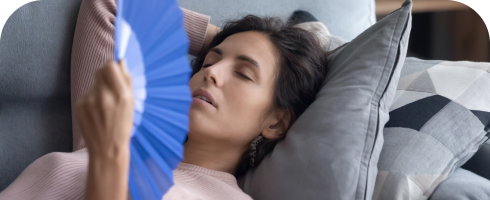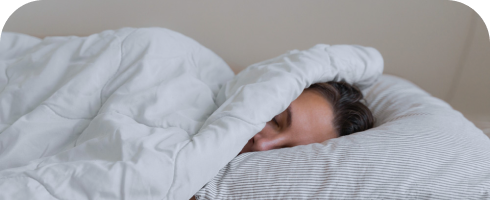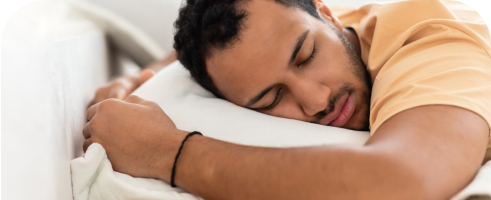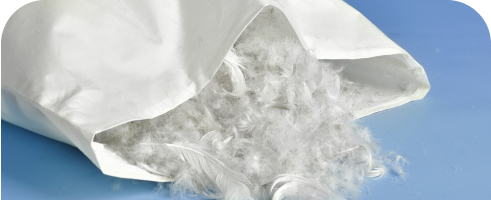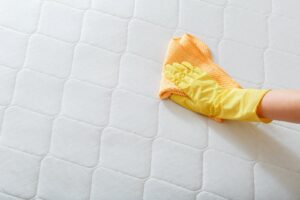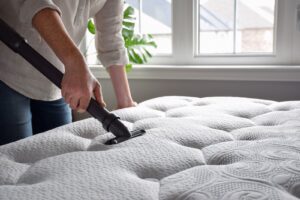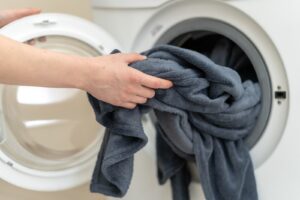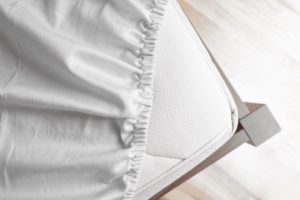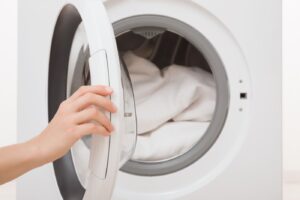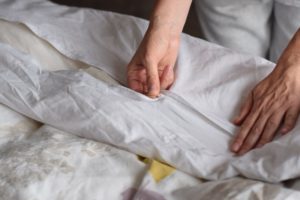How to Wash Down and Feather Pillows
Down and feather pillows are known for their luxurious feel. However, you may need to wash them regularly to keep them plush and fresh.
The key to clean and fluffy down pillows is gentle handling throughout the washing process. This applies to machine- and hand-washing. Your goal is to preserve the soft, fluffy texture of the feathers without damaging them.
Cleaning a down or feather pillow doesn’t have to be a daunting chore. For specific directions and the best results, always refer to the manufacturer’s care instructions on the label.
We will discuss why you should keep pillows clean and how often you should them. To give you a general understanding of the process, we’ll also share some standard guidelines on how to wash down and feather pillows in a machine or by hand.
Find a Pillow That’s Right for You
Looking for a new pillow? Take the quiz below to find the perfect pillow for your needs.
Trouble sleeping?
Answer these 5 easy questions to discover your perfect pillow

Trouble sleeping?
Answer these 5 easy questions to discover your perfect pillow
What position do you sleep in?

Side

Back

Stomach
Why It’s Important to Keep Pillows Clean
Keeping your pillow clean can enhance your comfort, reduce odors and allergens, and maintain a more hygienic sleep environment. The process involves more than simply washing the pillowcase, especially if you have a feather or down pillow. Over time, the pillow flattens, and proper washing restores the down’s fluffy texture. By drying the pillow correctly, you can also prevent the unpleasant smell of damp feathers and reduce the risk of mold.
Washing pillows may seem burdensome, but there are legitimate health reasons to do so. Several substances can build up in the pillow, some of which may cause allergic reactions.
- Sweat
- Drool
- Oils
- Skin and hair products
- Dead skin cells
- Dust mites (and their droppings)
Even though they may not be visible, skin cells fall off and collect on your pillow. Dust mites are attracted to them. Though mostly harmless themselves, dust mites leave behind droppings that can cause allergy symptoms, like itchy eyes, runny nose, and sneezing. They can also result in asthma symptoms, like coughing, wheezing, and difficulty breathing.
Bodily fluids, such as sweat, drool, and natural oils, can also soak through the pillowcase to your pillow. Sweat, in particular, leaves behind a telltale yellow spot. Additionally, skin and hair products may contain oils and chemicals that could stain the pillow.
How Often Should You Wash Your Pillows?
Depending on their materials and your lifestyle, you should generally aim to wash your pillows at least every 6 months. You may need to wash them more often if you sweat at night, have regular allergy symptoms, or use heavy face and hair products.
It’s easy to assume that a clean pillowcase equals a clean pillow. However, even if you wash your pillowcases every 2 weeks as recommended, your pillow still needs to be cleaned as well.
When it comes to feather and down pillows, proper washing can actually help restore the feathers and down to a plush, fluffy state. In contrast, inexpensive synthetic pillow fill sometimes clumps after washing.
How to Wash Down and Feather Pillows: Step-by-Step
Because feathers and down are delicate materials, you should take special care when washing pillows with this fill. Always check the manufacturer’s care instructions, which specify the proper washing method and temperature.
- Remove your pillowcase, and inspect the pillow for rips.
- Wash two pillows at the same time to balance out the machine.
- If using a top-load washer with an agitator, load pillows vertically to reduce the risk of damage.
- Use a mild detergent or a low-sudsing detergent specifically for feathers and down.
- Use a small amount of detergent to avoid soap residue and clumping.
- Use the cool or warm water settings since hot water can damage down.
- Always choose the delicate setting to avoid damaging the fill.
- Add an extra rinse and spin cycle to remove soap residue and excess water.
How to Dry Down and Feather Pillows
Once your pillows are fresh and clean, it is time to dry them. Again, refer to the manufacturer’s care instructions for the best results. Many pillows can be machine-dried.
- Remove excess water from the pillows by gently squeezing or pressing them between two towels. Do not wring the pillows because it can damage the fill.
- Use the delicate setting on low heat or no heat for several cycles.
- Fluff the pillows in between cycles or use dryer balls to break up any clumps.
- Carefully check for any odor or clumps that could indicate lingering moisture. Mold may grow if the pillow is not completely dry, so run more dryer cycles or hang the pillow on a clothesline to finish air-drying if necessary.
Washing Down and Feather Pillows by Hand
If you don’t feel comfortable putting your down or feather pillows in a machine, you can also wash them by hand. The process is very similar to using a washing machine but with a bit more labor on your part. Before you begin, review the manufacturer’s care instructions for the appropriate water temperature.
- Remove the pillowcase, and inspect the pillow and its seams for tears.
- Fill a tub with cool or warm water per the care instructions.
- Add a small amount of mild detergent to the water, and stir until well mixed.
- Place the pillow in the water, and get it completely wet.
- Gently squeeze the pillow to remove dirt and stains.
- Repeat, moving the pillow back and forth in the water and squeezing gently.
- Remove the pillow from the dirty water, and rinse it in clean water until the water runs clear.
- Remove the excess water by gently squeezing the pillow with your hands or pressing it between two towels. Do not wring your pillow because it could damage the down or feathers.
- To air-dry, hang the pillow on a clothesline by the long side or lay it on a flat surface in the sun.
- Fluff the pillow every hour to break up clumps, and check for any odor caused by lingering dampness.

Still have questions? Ask our community!
Join our Sleep Care Community — a trusted hub of sleep health professionals, product specialists, and people just like you. Whether you need expert sleep advice for your insomnia or you’re searching for the perfect mattress, we’ve got you covered. Get personalized guidance from the experts who know sleep best.

